Plastic waste found by archaeologists at Pembrokeshire hill-fort
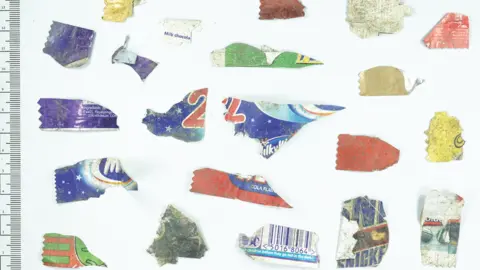 University of Liverpool
University of LiverpoolIt was not what archaeologists at an ancient Welsh hill-fort expected to find - a mountain of plastic.
Academics uncovered more than 2,000 items at the Castell Henllys site in Pembrokeshire.
But these were not ancient artefacts - they were discarded food wrappers and bottle tops from old school lunches.
University of Liverpool researchers said future archaeologists may now well refer to our modern times as the Plastic Age.
The discoveries were made by a team led by Harold Mytum, and their findings published in the academic journal Antiquity.
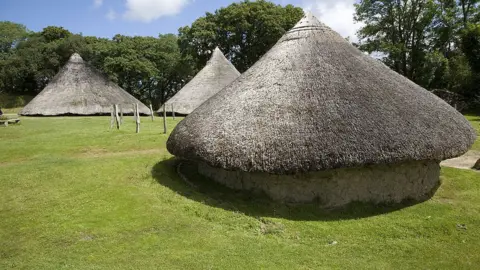 Getty Images
Getty ImagesThe researchers had originally set out to examine the reconstructed Iron Age village at Castell Henllys, which had been used as an educational resource for the last 30 years.
The village's thatched Celtic roundhouses were being demolished and a dig in and around the old buildings would give archaeologists an insight into how original roundhouses may have also decayed.
"We had not anticipated the large amounts of rubbish - mainly plastic - that was deposited, even though the houses did not look untidy," said Prof Mytum.
"Plastic spoons, straws, snack bar wrappers and cling film, and even labels from apples, were all very common finds."
What was found?
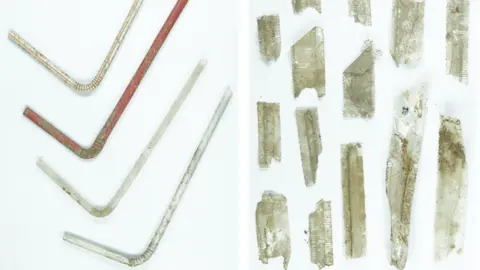 University of Liverpool
University of Liverpool- Plastic food wrap was the most common find
- Plastic forks and spatulas
- Salami snack wrappers
- Cheese snack wrappers
- Ketchup plastic sachets
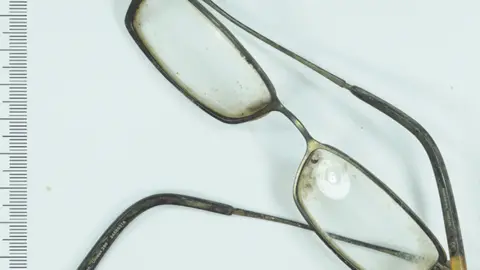 University of Liverpool
University of Liverpool University of Liverpool
University of Liverpool- A complete noodle pot foil lid
- Over 200 plastic drinking straw and wrapper fragments
- Chocolate bar and sweet wrappers
- Drink bottle labels
- Plastic bottle caps
- Elastic hair bands
- A pair of child's spectacles
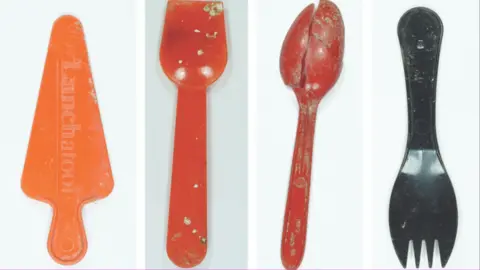 University of Liverpool
University of LiverpoolProf Mytum said enough plastic had been "trodden into the earth" to dominate the archaeological records of these reconstructed houses, which were built from records of houses that used to stand on the hillfort site.
The researchers concluded it provided some "incontrovertible evidence to support the use of the term the 'Plastic Age' for the late twentieth and early twenty-first century".
"Schools and families need to think about how they can make pack lunches that are more environmentally friendly," said the professor.
 Getty Images
Getty ImagesThe team said the discoveries would help uncover how and where plastic waste accumulates, to reduce the amount incorporated in the ground.
They are also working with Pembrokeshire Coast National Park to help educate the public and raise awareness over environmental concerns that might be raised by something so simple as a school packed lunch.
But Prof Mytum also said he hoped the Plastic Age did not last millennia, like the Iron Age.
"With many initiatives now pushing to switch from disposable plastic and plasticised items, this may be a narrow, but archaeologically distinctive chronological horizon," he added.